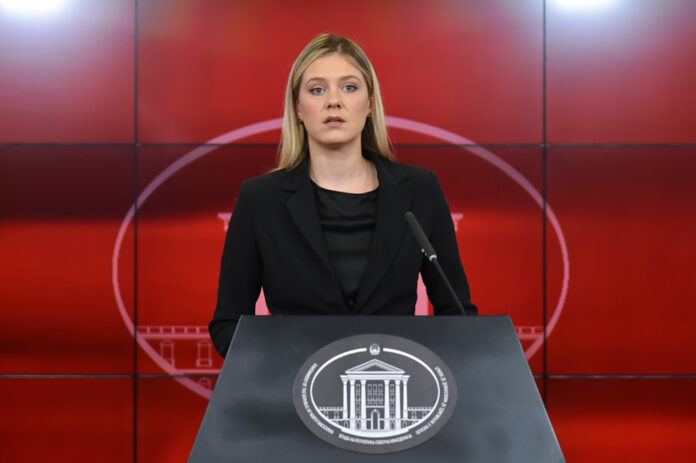Seven changes to insurance are coming

Seven new interventions in 2025 in the insurance ministry are proceeded by the Ministry of Labor, most notably the resolution of the « hot » issue with cuts in widowhood pensions as well as the introduction of uniform money benefits in all funds that joined EFKA.
At the same time, arrangements will be promoted to correct about 50,000 pensions at the EBRD (engineers, notaries, etc.), for the new way of calculating pensions by 2026, as well as to establish fictional redemption in the auxiliary.
The 7 interventions promoted by the Ministry of Labor in Insurance in 2025 are the following:
The aim with the new insurance is to establish uniform regulations on money benefits for all EFKA funds, as as a single body it must have single rules for all its insureds.
With the adoption of the Single Regulation, the generous benefits that are still paid, despite the unification of the Funds, will be limited, with the aim of reaching closer to IKA benefits. This will result in thousands of pensioners and insured by the former funds to lose much of the privileges they enjoy.
Changes to the Employee: Senior ceiling and online payments via platform and banks to tackle tax evasion and money laundering. A extensive scandal was recently found with thousands of euros contributions.
Reduction of employer contributions:
It has locked a further reduction in insurance contributions by 0.50%, which will apply from 2026, while an additional decrease in 2027 is open. Within 2025 the total contributions will be 35.66% of each salary, from 36.16% today.
Specifically, employer contributions from 22.29% today will stand up to 21.79% in 2025, and if the next reduction concerns only employers, in 2027 or earlier they will reach 21.19%.
One of the issues that the Ministry of Labor plans to regulate is the corrections of pensions about 50,000 pensioners of the Scientists Fund (EBRD), mainly engineers and notaries.
Corrections will be made by a ministerial decision or circular, which will provide recalculation after the two judicial decisions annuling the original pension calculations.
In particular, the CoE's ruling, which came out in 2024 with pilot trial, canceled the calculation of notaries pensions because it was made with imputed salary of 1,232.09 euros, while the retirement notaries' salaries were higher.
Therefore, their pensions should be recalculated and the corresponding increases should be given.
The second decision is from the Athens Court of First Instance and concerns pensions of self -employed pensioners of TSME. In this case, it was considered that less retirement earnings were taken into account for the calculation of the pension by the special surcharge sector. This resulted in the self-employed and at the same time insured engineers to lose from 200-1,200 euros from their retirement to the employed engineers.
The biggest « thorn » of the insurance is to cut widow's pensions in the private sector, which is still on the table without yet having the « green light » from Maximus to take the House of Representatives, as any cuts affects about 60,000 widows and widows, a sensitive part of society. Recall that the cut in widow's pensions is already implemented to public and OGA pensioners since 2020, but has not expanded to private pensioners.
By law, after three years, the beneficiaries of widows, if they take up a job or receive their own pension, should suffer a reduction in widow's pension from 70% to 35%. However, legal circles warn that it is not excluded that public and OGA pensioners will appeal to the courts requesting retrospective refunds of reduced amounts.
To limit the losses, the Ministry of Labor examines three scenarios:
– Only the part of the national pension is cut by 35% and not the whole widow's pension.
– The refund of the unnecessary amounts paid for the period when the law was not implemented in many installments.
– In the event that, after three years, the pensioner receives his own pension after three years, he can choose the smallest of the two pensions, which will be reduced by 50%.
The recent provision applies uniform terms and conditions for the foundation of an auxiliary pension, both in the private and public sectors, with the completion of 15 years of auxiliary insurance (4,500 stamps), either in a body or in succession.
That is, it is no longer checked whether the insured person has all or part of the auxiliary insurance time in the former ETEAM or bodies that had joined it, but the application will proceed regardless of which body is completed 15 years. In the second year, it will be considered whether there is extra time and, if the conditions are met, the additional amount will be given.
Following the activation of the Fast Track process for the issuance of 15 -year auxiliary pensions, the mini insurance is also promoted to the harmonization of the rules of recognition and acquisition of fictional years for the establishment of the right to auxiliary pension, as well as an increase it on a case -by -case basis.
In particular, not all insured persons have the ability to redeem the same fictitious years with the current status.
However, since Law 5078/2023 consolidated the rules of the foundation of a subsidiary pension and now a pensioner who has received a main pension with 15 years of insurance, he or she is entitled to an auxiliary pension, without a different age limit, the fictional years may be united.
Consequently, the proposed provision will apply more favorable arrangements to all Funds within EFKA for the acquisition of fictional years.
New way of calculating pensions:
By 2026, the retirement earnings will be calculated with the wage change index and not by the consumer prices index, as is the case today, where retirement earnings have been adjusted since 2002 and after a year with the change in the consumer prices index.
This means that next year, the retirement earnings of the insured, which form the basis of calculating the reciprocal pension, cease to increase with inflation and will increase with the rate of salaries increase of all employees.
If in 2025 the wage index records an increase of 3.5%-4%, this percentage will also increase the salary taken into account for the retirement pension of those who leave in 2026.







